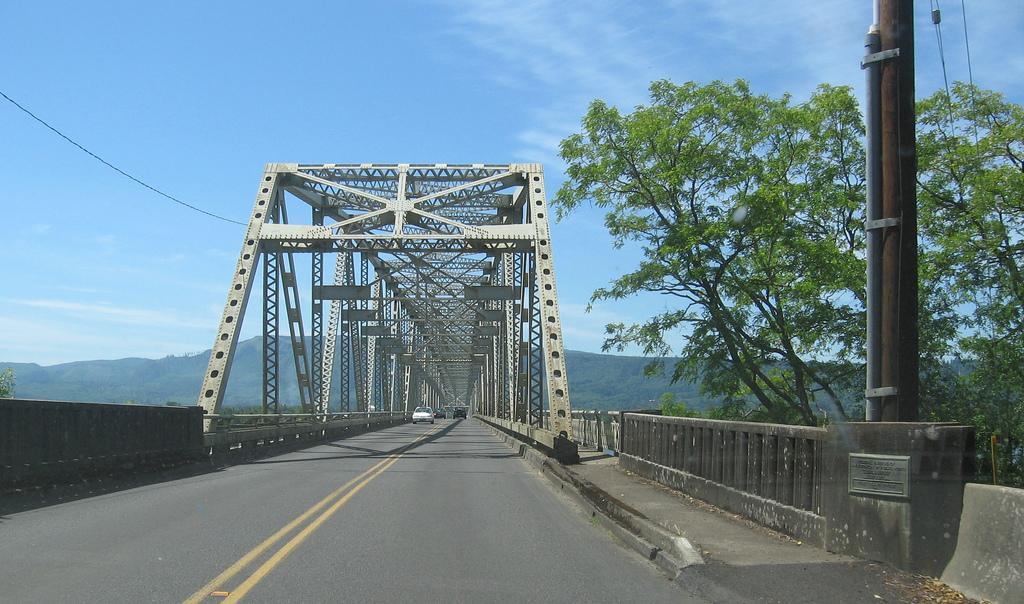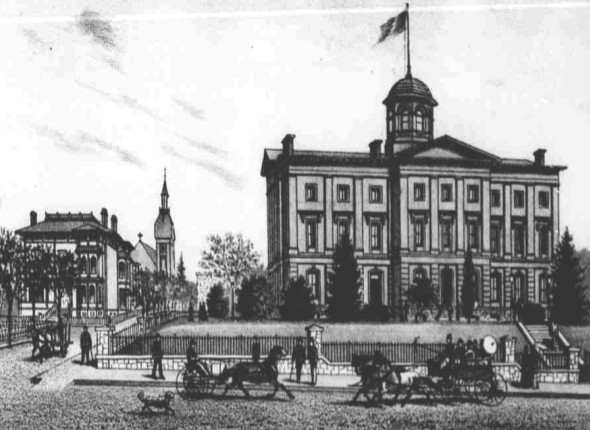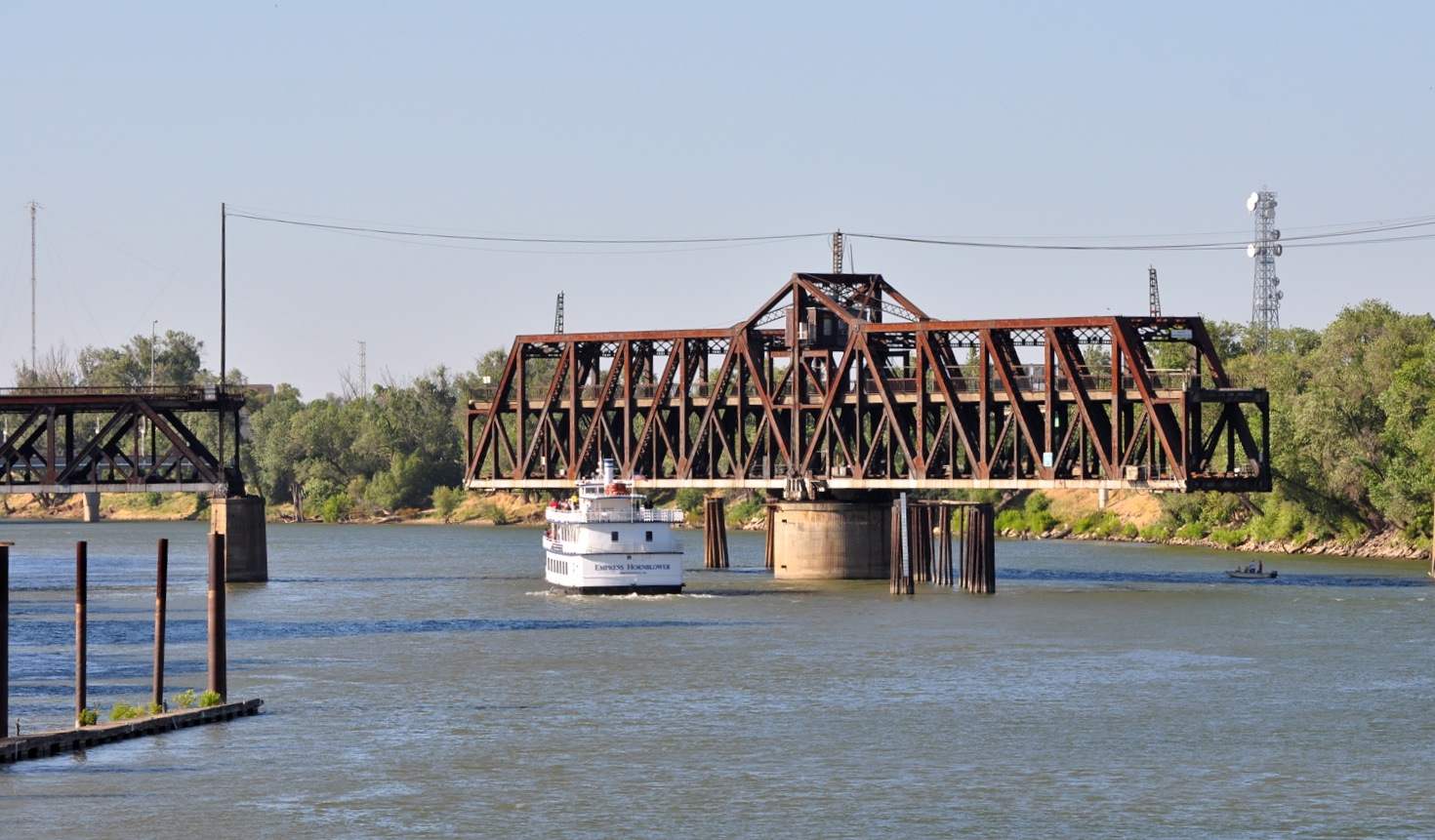|
Oregon Trunk Rail Bridge
The Oregon Trunk Rail Bridge or Celilo Bridge"Woman Christens Big Celilo Bridge" (January 6, 1912). ''The Oregonian, The Morning Oregonian'', p. 10. is a single-track railroad bridge opened in 1912 over the Columbia River in the Pacific Northwest of the United States. It consists of eight steel truss bridge, truss spans and several deck girder spans, and since 1957 it has included a Vertical-lift bridge, vertical-lift section. The bridge was designed by engineer Ralph Modjeski and erected by the Missouri Valley Bridge & Iron Co., of Leavenworth, Kansas. It is part of the Wishram, Washington to Bend, Oregon line of the BNSF Railway (formerly the Oregon Trunk Line of the Spokane, Portland and Seattle Railway). The bridge ... [...More Info...] [...Related Items...] OR: [Wikipedia] [Google] [Baidu] |
BNSF Railway
BNSF Railway is the largest freight railroad in the United States. One of six North American Class I railroads, BNSF has 36,000 employees, of track in 28 states, and over 8,000 locomotives. It has three Transcontinental railroad, transcontinental routes that provide rail connections between the western and eastern United States. BNSF trains traveled over in 2010, more than any other North American railroad. The BNSF Railway Company is the principal operating subsidiary of parent company Burlington Northern Santa Fe, LLC. Headquartered in Fort Worth, Texas, the railroad's parent company is a wholly owned subsidiary of Berkshire Hathaway Inc., of Omaha, Nebraska. The current CEO is Kathryn Farmer. According to corporate press releases, BNSF Railway is among the top transporters of intermodal freight in North America. It also hauls bulk cargo, including coal. The creation of BNSF started with the formation of a holding company on September 22, 1995. This new holding compa ... [...More Info...] [...Related Items...] OR: [Wikipedia] [Google] [Baidu] |
Oregon Trunk Line
The Oregon Trunk Line is a railway line in Oregon and Washington operated by the BNSF Railway. It is a remnant of the Spokane, Portland and Seattle Railway, running from Wishram, Washington in the north to a connection with the Union Pacific at Chemult at its south end. Connections to the Gateway Subdivision are facilitated by trackage rights over the Union Pacific Cascade Subdivision to Klamath Falls. History The Oregon Trunk Line railroad surveyed the route in 1906, with the golden spike driven at Bend on October 5, 1911. It was built with competition from the Deschutes Railroad Company, which laid their tracks on the eastern bank of the Deschutes River. The competing companies' workers became embroiled in a Railroad War during construction, with attacks involving dynamite, guns, and general brawls. A truce was called in 1909 to allow the two to build a joint track through the narrow Deschutes River Valley. Northern Pacific Railway and Great Northern Railway agreed to ... [...More Info...] [...Related Items...] OR: [Wikipedia] [Google] [Baidu] |
List Of Crossings Of The Columbia River
This is a list of bridges and other crossings of the Columbia River from the Pacific Ocean upstream to its source. Crossings See also * List of crossings of the Willamette River * Lists of Oregon-related topics * Outline of Washington (state) * List of British Columbia-related topics References * * External links * {{Columbia River Crossings of the Columbia River, * Oregon transportation-related lists, Columbia River crossings Lists of buildings and structures in British Columbia, Crossings Lists of river crossings in the United States, Columbia River Lists of river crossings in Washington (state), Columbia ... [...More Info...] [...Related Items...] OR: [Wikipedia] [Google] [Baidu] |
Union Pacific Railroad
The Union Pacific Railroad is a Railroad classes, Class I freight-hauling railroad that operates 8,300 locomotives over routes in 23 U.S. states west of Chicago and New Orleans. Union Pacific is the second largest railroad in the United States after BNSF Railway, BNSF, with which it shares a duopoly on transcontinental freight rail lines in the Western United States, Western, Midwestern United States, Midwestern and West South Central states, West South Central United States. Founded in 1862, the original Union Pacific Rail Road was part of the first transcontinental railroad project, later known as the Overland Route (Union Pacific Railroad), Overland Route. Over the next century, UP absorbed the Missouri Pacific Railroad, the Western Pacific Railroad, the Missouri–Kansas–Texas Railroad and the Chicago, Rock Island and Pacific Railroad. In 1995, the Union Pacific merged with Chicago and North Western Transportation Company, completing its reach into the Upper Midwest. In ... [...More Info...] [...Related Items...] OR: [Wikipedia] [Google] [Baidu] |
Pasco, Washington
Pasco ( ) is a city in, and the county seat of, Franklin County, Washington, United States. The population was 77,108 at the 2020 census, and estimated at 80,038 in 2023. Pasco is one of three cities (the others being Kennewick and Richland) that make up Washington state's Tri-Cities region, a mid-sized metropolitan area of approximately 303,622 people. History On October 16, 1805, the Lewis and Clark Expedition camped in the Pasco area, at a site now commemorated by Sacajawea State Park. The area was frequented by fur trappers and gold traders. In the 1880s, the Northern Pacific Railway was built near the Columbia River, bringing many settlers to the area. Pasco was officially incorporated on September 3, 1891. It was named by Virgil Bogue, a construction engineer for the Northern Pacific Railway after Cerro de Pasco, a city in the Peruvian Andes, where he had helped build a railroad. In its early years Pasco was a small railroad town, but the completion of the Grand Co ... [...More Info...] [...Related Items...] OR: [Wikipedia] [Google] [Baidu] |
Portland, Oregon
Portland ( ) is the List of cities in Oregon, most populous city in the U.S. state of Oregon, located in the Pacific Northwest region. Situated close to northwest Oregon at the confluence of the Willamette River, Willamette and Columbia River, Columbia rivers, it is the county seat of Multnomah County, Oregon, Multnomah County, Oregon's most populous county. Portland's population was 652,503, making it the List of United States cities by population, 28th most populous city in the United States, the sixth most populous on the West Coast of the United States, West Coast, and the third most populous in the Pacific Northwest after Seattle and Vancouver. Approximately 2.5 million people live in the Portland metropolitan area, Oregon, Portland metropolitan area, making it the List of metropolitan statistical areas, 26th most populous in the United States. Almost half of Oregon's population resides within the Portland metro area. Named after Portland, Maine, which is itself named aft ... [...More Info...] [...Related Items...] OR: [Wikipedia] [Google] [Baidu] |
Wye (railroad)
In railroad structures and rail terminology, a wye (like the'' 'Y' ''glyph) or triangular junction (often shortened to just triangle) is a triangular joining arrangement of three rail lines with a railroad switch (set of points) at each corner connecting to the incoming lines. A turning wye is a specific case. Where two rail lines join, or where a spur diverges from a railroad's mainline, wyes can be used at a mainline rail junction to allow incoming trains to travel in either direction. Wyes can also be used for turning railway equipment, and generally cover less area than a balloon loop doing the same job, but at the cost of two additional sets of points to construct and then maintain. These turnings are accomplished by performing the railway equivalent of a three-point turn through successive junctions of the wye. The direction of travel and the relative orientation of a locomotive or railway vehicle thus can be reversed. Where a wye is built specifically for equipment ... [...More Info...] [...Related Items...] OR: [Wikipedia] [Google] [Baidu] |
Oregon Trunk Rail Bridge, Lift Span Down - Viewed From The Northeast
Oregon ( , ) is a state in the Pacific Northwest region of the United States. It is a part of the Western U.S., with the Columbia River delineating much of Oregon's northern boundary with Washington, while the Snake River delineates much of its eastern boundary with Idaho. The 42° north parallel delineates the southern boundary with California and Nevada. The western boundary is formed by the Pacific Ocean. Oregon has been home to many indigenous nations for thousands of years. The first European traders, explorers, and settlers began exploring what is now Oregon's Pacific coast in the early to mid-16th century. As early as 1564, the Spanish began sending vessels northeast from the Philippines, riding the Kuroshio Current in a sweeping circular route across the northern part of the Pacific. In 1592, Juan de Fuca undertook detailed mapping and studies of ocean currents in the Pacific Northwest, including the Oregon coast as well as the strait now bearing his name. The Le ... [...More Info...] [...Related Items...] OR: [Wikipedia] [Google] [Baidu] |
Vertical-lift Bridge
A vertical-lift bridge or just lift bridge is a type of movable bridge in which a span rises vertically while remaining parallel with the deck. The vertical lift offers several benefits over other movable bridges such as the bascule and swing-span bridges. Generally speaking, they cost less to build for longer moveable spans. The counterweights in a vertical lift are only required to be equal to the weight of the deck, whereas bascule bridge counterweights must weigh several times as much as the span being lifted. As a result, heavier materials can be used in the deck, and so this type of bridge is especially suited for heavy railroad use. The biggest disadvantage to the vertical-lift bridge (in comparison with many other designs) is the height restriction for vessels passing under it, due to the deck remaining suspended above the passageway. Most vertical-lift bridges use towers, each equipped with counterweights. An example of this kind was built in Portland, Oregon, U ... [...More Info...] [...Related Items...] OR: [Wikipedia] [Google] [Baidu] |
Swing Bridge
A swing bridge (or swing span bridge) is a movable bridge that can be rotated horizontally around a vertical axis. It has as its primary structural support a vertical locating pin and support ring, usually at or near to its center of gravity, about which the swing span (turning span) can then pivot horizontally as shown in the animated illustration to the right. In its closed position, a swing bridge carrying a road or railway over a river or canal, for example, allows traffic to cross. When a water vessel needs to pass the bridge, road traffic is stopped (usually by traffic signals and barriers), and then motors rotate the bridge horizontally about its pivot point. The typical swing bridge will rotate approximately 90 degrees, or one-quarter turn; however, a bridge which intersects the navigation channel at an oblique angle may be built to rotate only 45 degrees, or one-eighth turn, in order to clear the channel. Small swing bridges as found over narrow canals may be pivo ... [...More Info...] [...Related Items...] OR: [Wikipedia] [Google] [Baidu] |
Celilo Canal
Celilo Canal was a canal in Oregon connecting two points of the Columbia River, just east of The Dalles. In the natural state of the Columbia River, there was an stretch from The Dalles to Celilo Falls that was impassable upstream and navigable downstream only at high water and at great risk. Celilo Canal was built in the early part of the 1900s to allow steamboat and river-borne traffic to bypass that stretch. History and construction In 1858, a -long wagon road, the Oregon Portage Railroad, had been built around the falls on the south side of the river. This was replaced in 1863 by a -long portage railway owned by the Oregon Steam Navigation Company. A number of studies and false starts were made towards building a canal around the falls, but construction on what was to become known as the Celilo Canal did not begin until 1905, and then took ten years to complete. In 1909, ''Scientific American'' summarized the status of the work and its objectives: ''Scientific America ... [...More Info...] [...Related Items...] OR: [Wikipedia] [Google] [Baidu] |





